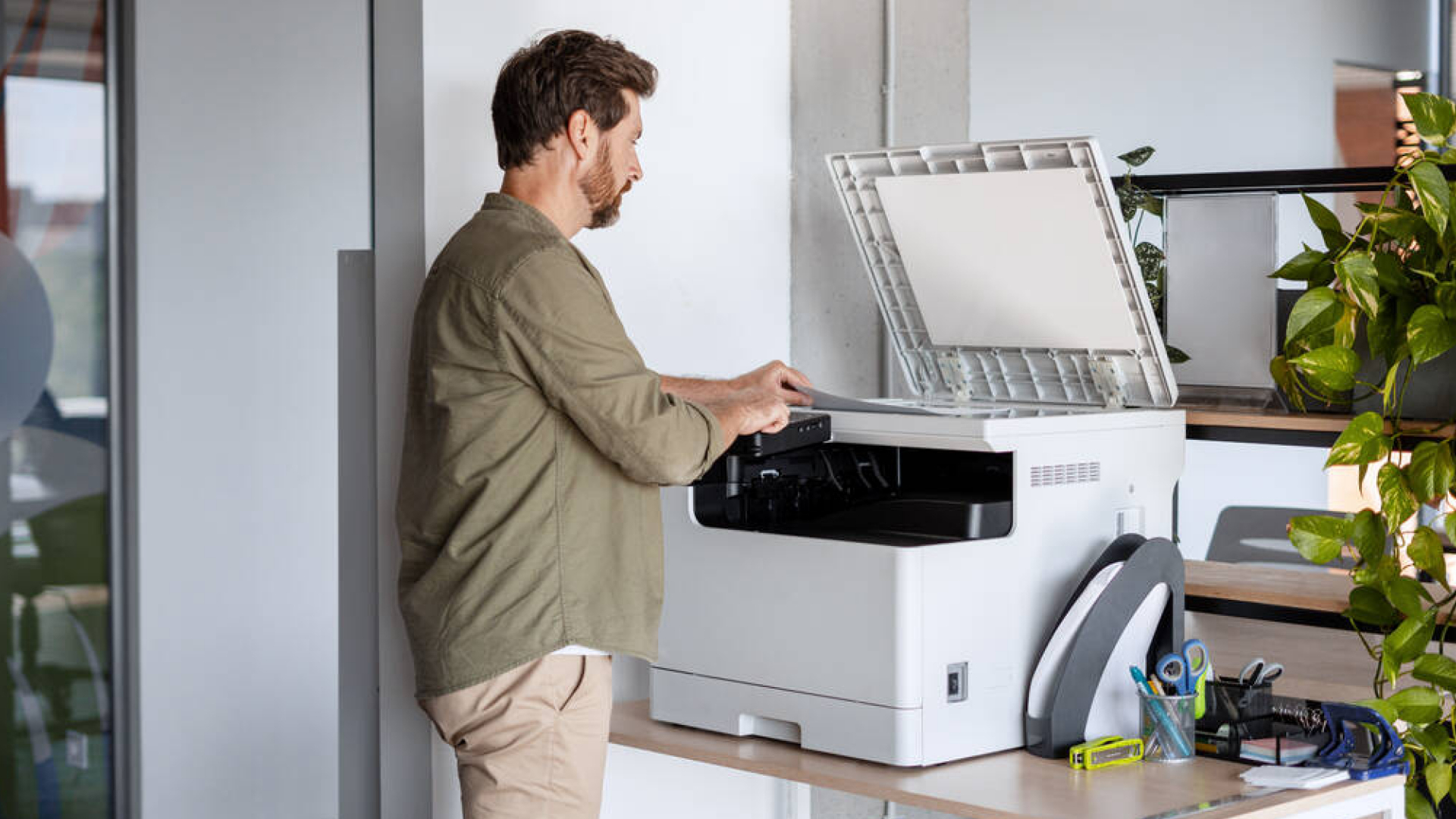
Printer Not Working After Power Outage? Here’s How to Fix It
A recent Splunk survey found that 62% of business leaders in Australia experience productivity loss due to system outages or unplanned downtime, with each incident lasting nearly two hours on average. And yes, that often includes office printers not working after a power outage or refusing to communicate with your PC.
So, before you spend valuable time or money assuming the machine is destined for the scrap heap, there is a methodical, step-by-step diagnostic process you can follow. This guide provides a comprehensive approach to identifying and resolving the most typical issues that arise when a printer refuses to work after a power interruption. We offer practical fixes from simple resets to advanced network troubleshooting.
1. Start with the Basics: Power Source and Cables
Power cuts can cause small electronic chaos—corrupted settings, disrupted communication between parts, or blown internal components. But sometimes the issue is embarrassingly simple. Try this first:
- Test the outlet. Plug in your phone charger or a lamp. If they work, your outlet’s fine.
- Inspect the cable. Check both ends of the power cable. Make sure it’s seated properly at the printer and the outlet.
- Reset the surge protectors. Some surge boards quietly trip during a blackout. Press the little red button if you spot one.
After that, plug the printer directly into the wall—skip the power board for now. Give it a minute and hit the power button. If it’s still lifeless, keep reading for more tips.
2. Watch and Listen for Clues
Even when the printer appears dead, small noises or flashes can tell you what’s going on.
- No lights, no sounds: It’s probably not getting power.
- Lights flicker or blink repeatedly: That’s your printer’s SOS signal. Pay attention, as they often point to the problem.
- Error message codes: Write them down. Codes like E01 or C000 can point straight to the cause.
Note any visible code or flashing pattern before attempting further resets. Some brands, like Canon or HP, provide downloadable guides that explain what these signals mean.
3. Try the Classic “Power Reset” Trick
It sounds too simple to work, but the “power reset” trick often fixes a printer that won’t turn on after a power outage. After all, printers are tiny computers with memory and capacitors that can hang up after a sudden power cut.
How to do it:
- Turn the printer off and unplug it completely from the wall.
- Remove any USB or network cables.
- Wait two minutes—long enough for the capacitors to discharge.
- Press and hold the power button for about 15 seconds while it’s still unplugged.
- Plug it back in directly to the wall socket (skip the surge protector for now).
- Try turning it on again.
This simple step often revives printers that appear unresponsive. If it powers up, reconnect cables and try a test print.
4. Check for Internal Fuse Damage
When power flickers off and on, it can send a surge that knocks out your printer’s internal fuse. Laser printers and office inkjets tend to have small fuses designed to protect the circuitry. If that fuse is gone, the printer won’t turn on at all.
The good news? It’s replaceable. The bad news? It’s not something to DIY unless you know your way around electronics. A qualified printer technician can replace it in minutes. If your machine’s still under warranty, don’t open it; call the service centre first.
5. Inspect Network or Connection Settings
After a power loss, printers connected via Wi-Fi or Ethernet sometimes lose their connection settings. This is a particularly common issue if your Brother printer is not working after a power outage and is connected via Wi-Fi, as the router often assigns a new IP address after a reboot. It can make it seem as if the printer is broken when it’s simply offline.
- For Wi-Fi printers: Go to the printer’s network menu and check if it’s connected. If not, run the wireless setup again.
- For USB printers: Unplug the USB cable. Restart both the printer and your computer, then reconnect.
- For larger office setups: Check whether other devices are online. If yes, reinstall the printer driver—outages sometimes corrupt them mid-task.

6. Look for Signs of Firmware Glitch
If your printer froze mid-task when the power went out, its firmware might’ve been damaged. That’s the software that tells its brain how to function.
Most brands offer firmware recovery tools on their websites. For example, Canon and Epson printers often respond to a specific button combo held while turning the power on—that triggers a factory reset.
Don’t interrupt the process once it starts. Pulling the plug halfway through can brick your printer entirely.
7. Test the Power Supply Unit (PSU)
If you’re handy and have a multimeter, test the power adapter (for smaller printers like HP DeskJets or Canon PIXMAs). Sometimes the adapter itself fails during a surge.
Larger printers usually have an internal PSU, and that’s best left to a pro. Replacing it means opening the casing and dealing with components that store electricity.
Companies like Printer Repair Centre can test and replace faulty PSUs quickly—often on-site, so you don’t lose another workday.
8. Address Possible Surge Damage
Power surges are one of the most damaging effects of outages. Even a quick jolt when the power returns can fry tiny electronic parts. You might notice odd symptoms:
- The printer powers on but makes unusual noises.
- Error codes that mention the power module or main board.
- The printer restarts repeatedly or freezes mid-task.
Unfortunately, when surge damage occurs, replacement of specific components may be required. Skilled technicians can often repair the main board or replace only the damaged section instead of the entire unit—saving considerable cost.
9. Protect Against Future Power Problems
Once your printer is running again, it’s worth taking preventive measures. Power fluctuations are unpredictable, especially during summer storms or grid maintenance periods.
A few habits can make all the difference:
- Use a surge protector rated for printers and computers—and replace it every few years.
- Unplug during storms or long outages. It’s the simplest form of protection.
- Avoid overloaded circuits. Don’t share the same outlet with heavy appliances.
- Back up your printer settings (yes, that’s possible on many models). It saves setup time if things reset again.
10. Time to Call a Pro
If you’ve checked the cables, tried the reset, and double-checked your network and yet the printer’s still refusing to work, you’ve likely crossed into hardware territory.
And yes, downtime is expensive. It can cost small businesses in Australia thousands of dollars per hour, depending on the industry. That’s motivation enough to let professionals handle the repair rather than wasting another workday guessing.
Final Thoughts
Printers and power outages don’t mix well, but that doesn’t mean yours is finished. Most “dead” printers just need a bit of patience—and the right reset sequence.
However, if the problem persists after you’ve tried the basics, don’t let it derail your workday. Call professionals at Printer Repair Centre. We specialise in resolving post-outage problems, including complex hardware repairs and network recalibration. Our technicians service all major brands, offering reliable, on-site expertise across Sydney.
So, give us a call today and let us help you minimise costly downtime by rapidly restoring your printing capability.




